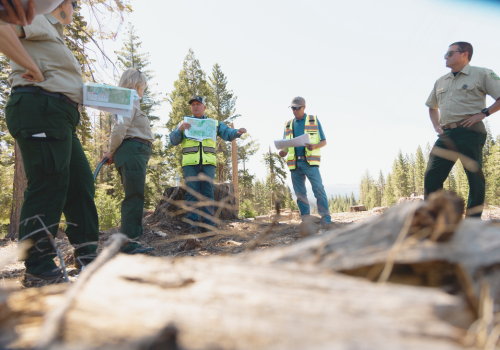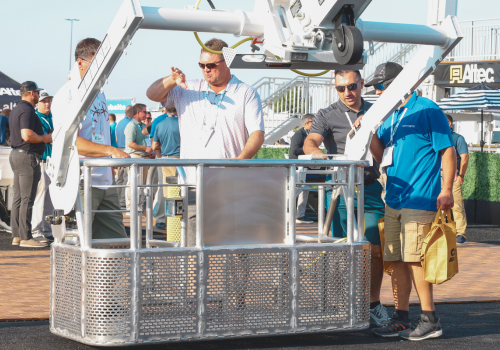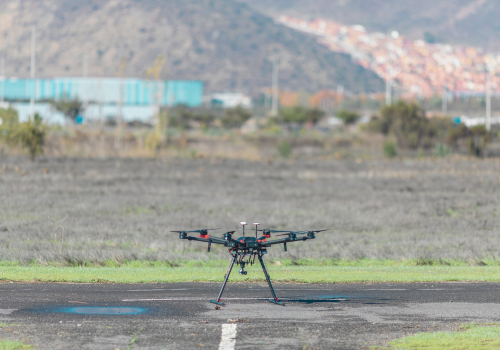When safety fails in a utility work zone, the consequences can be devastating. While minor injuries are common, this article focuses on the most tragic and final outcomes—worker fatalities. Drawing from the latest data, we examine the top causes of these deaths and the actions companies can take to prevent them. For context, we previously provided 4 Work Zone Safety Tips to Protect Utility Workers in 2022— this article is still relevant and worth reviewing. Now, we focus on the fatal outcomes that demand our greatest attention. Information about the data and sources is found at the end of this article.
Falls, Trips, and Slips — 39% of Fatalities
Falls are categorized as those at lower levels and those at the same level. Preventing falls to lower levels requires fall prevention systems, such as guardrails and barriers that meet height and strength requirements. Fall arrest systems include safety harnesses and lanyards. Self-retracting lifelines provide improved mobility while still limiting fall distances.
Where possible, employees should work from a mobile platform; bucket trucks commonly serve this purpose but mobile elevated work platforms (MEWPs, labeled aerial work platforms until 2020), such as scissor or boom lifts, are suitable for this.
Simple housekeeping helps prevent all three types of incidents: pick up trash, tools, debris, and materials. Don’t leave cords lying out and exposed.
Managerial tools include training, hazard analysis, inspection and maintenance of safety-related equipment, and rescue and emergency planning. Information on slips, trips, and falls tends to be generic but OSHA has a great webpage to reference for fall protection. Fall protection was the most cited violation in 2024, for the 14th year in a row.
Transportation-Related Fatalities — 22%
Transportation fatalities can be grouped into combinations from four categories: land vehicles, pedestrians, on-roadway and off-roadway. The most common is an on-roadway collision between two vehicles. Pedestrian incidents occur in multiple ways and places and can occur anywhere pedestrians are present. (Note that “pedestrian” here means any person not in or on a vehicle. This usually means workers, not members of the general public.) Vehicle roll-over and falling or jumping from moving vehicles resulting in death are not commonplace but do occur.
High-visibility personal protective equipment helps reduce pedestrian fatalities, but the big gains in safety are found in technological advances in equipment. Bird’s-eye view or 270° cameras with dedicated monitors greatly reduce blind spots for operators. (With 270° systems, it is assumed the operator has visibility 45° left and right of straight ahead to fill in the remaining 90°.) Rear object detection and avoidance are also effective, and the more advanced systems differentiate between persons and other objects. Roll-over prevention is enhanced by systems that detect impending instability and restrict functions that could exacerbate the imbalance.
Exposure to Harmful Substances and Environments — 19%
Nearly half of these deaths are drug or alcohol overdoses. Some may respond with, “Isn’t that a cultural or social issue?” Yes, it is, but ensuring worker safety and minimizing worker deaths must consider all underlying causes, not just those addressed by PPE and backup alarms. Human resources departments should develop strategies for calling attention to this problem and offering solutions, from toolbox talks to referring employees to treatment centers. For entities lacking in-house resources, state and county mental health clinics can be good sources of assistance. See the penultimate paragraph for links to related articles we’ve published.
Exposure to electricity is the next largest subset here. See our recent interview with an arc flash survivor for a vivid description of what this can entail. The deaths are evenly split between direct and indirect exposure. “Direct” is when there is contact between the power source and the person. “Indirect” is when a conductive material touches the source, as when a ladder is laid against a power line or when electricity is conducted through a wet surface. Mitigation measures include training and awareness, identification of all sources of electricity, lock-out/tag-out (LOTO), tools approved for use in electrical applications, and proper PPE.
Harmful substances are less common in utility work than they are in other industries, such as manufacturing, but may be present if the utility work is being done in an environment where other activities are also taking place. If safety data sheets (SDS, formerly MSDS) are present, review the information and communicate the risks to personnel. OSHA provides a good reference in .pdf format on what SDS materials include.
Struck-by, Caught-in, or Contact Incidents — 14%
Most of these involve victims struck by an object. There are also incidents where the victim is struck or crushed by or entangled in equipment, whether the equipment is running or not. This often happens during servicing and testing. Trench collapse accounts for about 10% of these deaths. Here again, PPE, awareness, and best practices are key preventive measures.
Workplace Violence and Suicide — 4%
Two subsets comprise 100% of the total. Homicides, mostly with firearms, account for one-third of these deaths. The other two-thirds are suicides, mostly by “hanging, strangulation, asphyxiation.” As with harmful substances, human resource departments should devise strategies for recognizing and addressing these issues.
Where to Start: 3 High-Impact Safety Investments
Fall Protection Systems: Guardrails, harnesses, and training can prevent the #1 cause of fatal utility injuries.
Operator Assistance Technology: 270° camera systems and pedestrian detection software reduce equipment-related deaths.
Mental Health Programs: Support for addiction, stress, and suicide prevention saves lives behind the scenes.
In addition to our article from 2022 linked in the first paragraph, these articles on mental health may also prove helpful as mental health plays an essential role in safety:
How to Reduce Stress in Construction
The Importance of Mental Health Awareness in Construction
Expert Tips on Identifying and Managing Stress
Building a Better Work-Life Balance for Yourself and Your Employees
Construction is Stressful: Here’s How to Manage Stress With Your Crew
Every fatality in a utility work zone is preventable. By identifying the leading causes of worker deaths and implementing targeted interventions—from fall protection and machine safety to mental health initiatives—we can help ensure more workers go home safely every day. Safety is not a checklist; it’s a culture of vigilance, compassion, and continuous improvement.
Our source for data is the U.S. Bureau of Labor Statistics. This table shows “Fatal occupational injuries by industry and event or exposure,” while this one shows “Fatal occupational injuries by event or exposure for all fatal injuries and major private industry sector, all United States.” The latter is included on the assumption that its larger sample size will yield better insights. All numbers are for 2023; each year’s numbers come out late the next year, so 2024 numbers were not available at the time this was written.
Subscribe to The Utility Expo monthly newsletter to receive more industry insights like this.
Read Next
The Impact of Stress on a Utility Worker, and How to Manage the Stress












